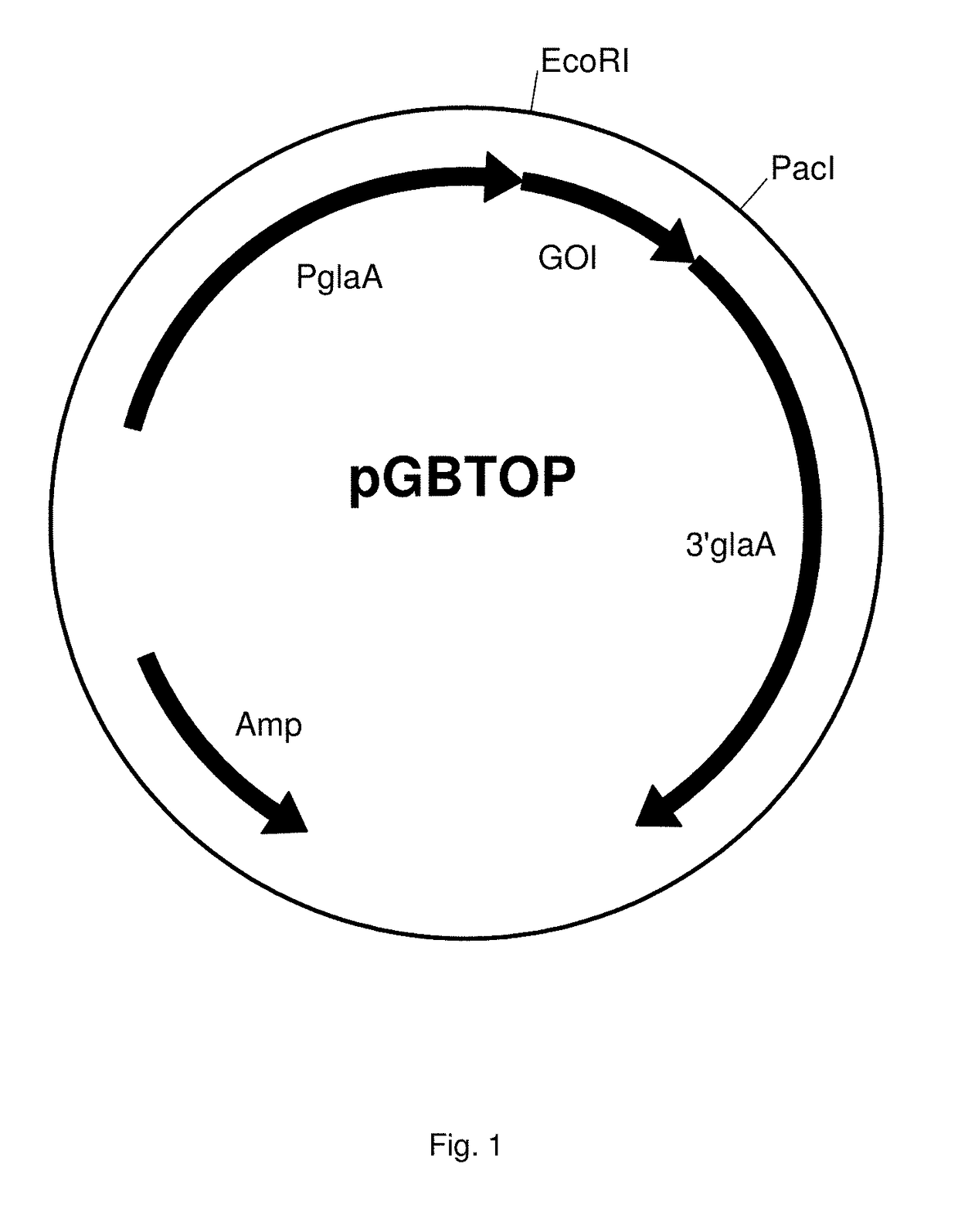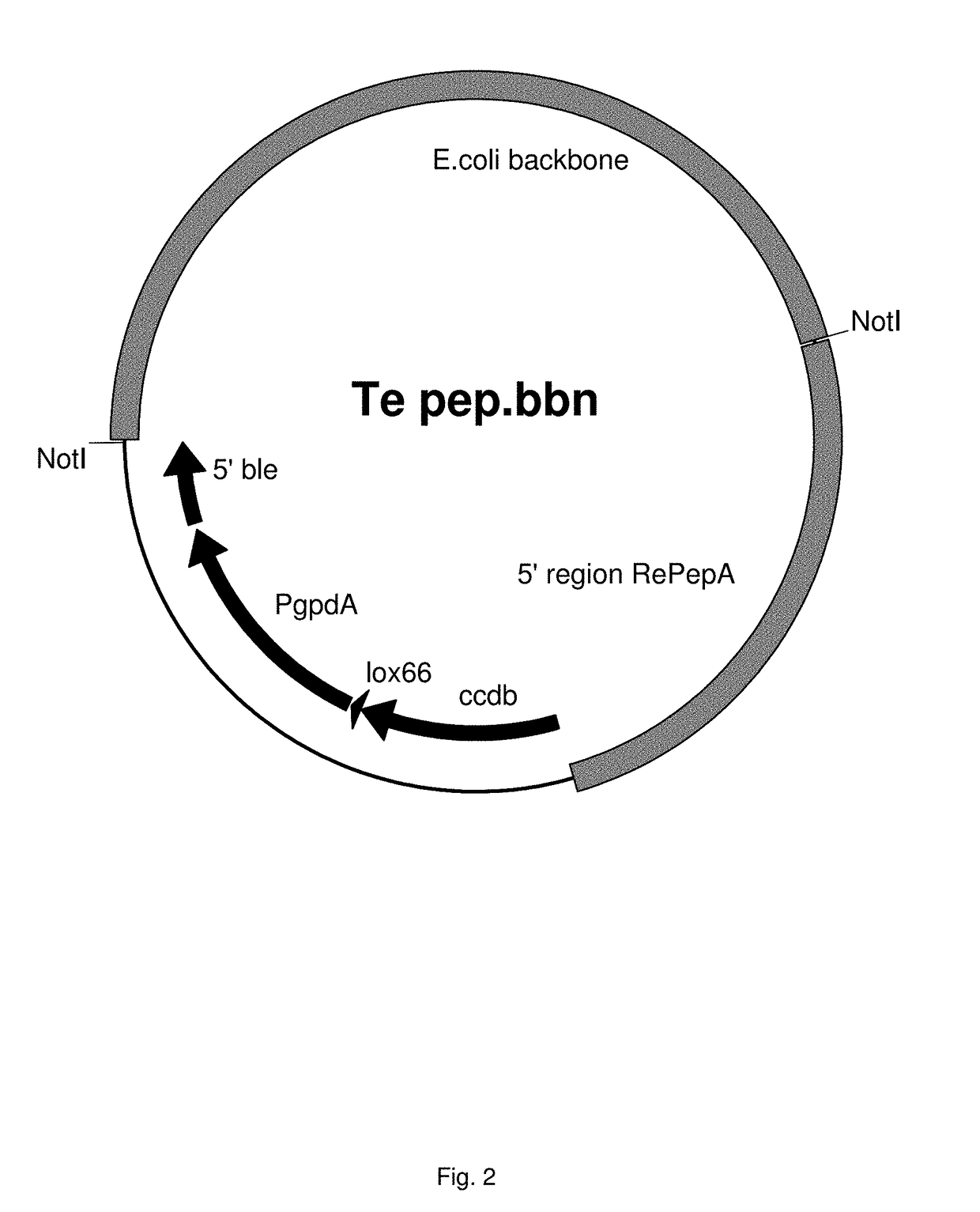Carbohydrate degrading polypeptide and uses thereof
a technology of degrading polypeptides and carbohydrates, applied in hydrolases, biochemistry apparatus and processes, enzymes, etc., can solve the problems of limiting the commercialization of biomass bioconversion processes, the cost and hydrolytic efficiency of enzymes, and the enormous energy potential of these carbohydrates
- Summary
- Abstract
- Description
- Claims
- Application Information
AI Technical Summary
Benefits of technology
Problems solved by technology
Method used
Image
Examples
example 8
nt of Two Different Cellulose Mixtures by Addition of Temer09484 for the Hydrolysis of Lignocellulosic Feedstocks
[0573]The supernatant of the Temer09484 A. niger shake flask fermentation was concentrated and spiked on a mild acid pretreated corn stover feedstock as described above. The enzyme showed significant xylose release from this feedstock in a wide range of temperatures (50, 65 and 75° C.) and pH values (3.5-4.5-5.0) used during the 72 hours of incubation as shown in Table 5. This shows that Temer09484 is important for the hydrolysis of lignocellulosic feedstocks.
[0574]
TABLE 5Effect of Rasamsoniaemersonii Temer09484 on release of xylose (g / L) from mildly acid pretreated corn stover feedstock after 72 h incubation at different temperature / pH conditions.pH 5.0-pH 3.5-pH 4.5-pH 4.5-Protein ID50° C.65° C.65° C.75° C.Feedstock only—no enzyme0.140.140.140.13Temer094840.290.220.230.19
[0575]The supernatant of the Temer09484 A. niger shake flask fermentation was also tested in combina...
example 11
t of Two Different Cellulose Mixtures by Addition of Temer00088 for the Hydrolysis of Lignocellulosic Feedstocks
[0581]The supernatant of the Temer00088 A. niger shake flask fermentation was concentrated and spiked on a mild acid pretreated corn stover feedstock as described above. The enzyme showed significant xylose release from this feedstock in a wide range of temperatures (50, 65 and 75° C.) and pH values (3.5-4.5-5.0) used during the 72 hours of incubation as shown in Table 3. This shows that Temer00088 is important for the hydrolysis of lignocellulosic feedstocks.
[0582]
TABLE 9Effect of Rasamsoniaemersonii Temer00088 on release of xylose (g / L) from mildly acid pretreated corn stover feedstock after 72 h incubation at different temperature / pH conditions.pH 5.0-pH 3.5-pH 4.5-pH 4.5-Protein ID50° C.65° C.65° C.75° C.Feedstock only—no enzyme0.140.140.140.13Temer000880.290.260.270.22
[0583]The supernatant of the Temer00088 A. niger shake flask fermentation was also tested in combinat...
PUM
| Property | Measurement | Unit |
|---|---|---|
| pH | aaaaa | aaaaa |
| temperature | aaaaa | aaaaa |
| temperature | aaaaa | aaaaa |
Abstract
Description
Claims
Application Information
 Login to View More
Login to View More - R&D
- Intellectual Property
- Life Sciences
- Materials
- Tech Scout
- Unparalleled Data Quality
- Higher Quality Content
- 60% Fewer Hallucinations
Browse by: Latest US Patents, China's latest patents, Technical Efficacy Thesaurus, Application Domain, Technology Topic, Popular Technical Reports.
© 2025 PatSnap. All rights reserved.Legal|Privacy policy|Modern Slavery Act Transparency Statement|Sitemap|About US| Contact US: help@patsnap.com



